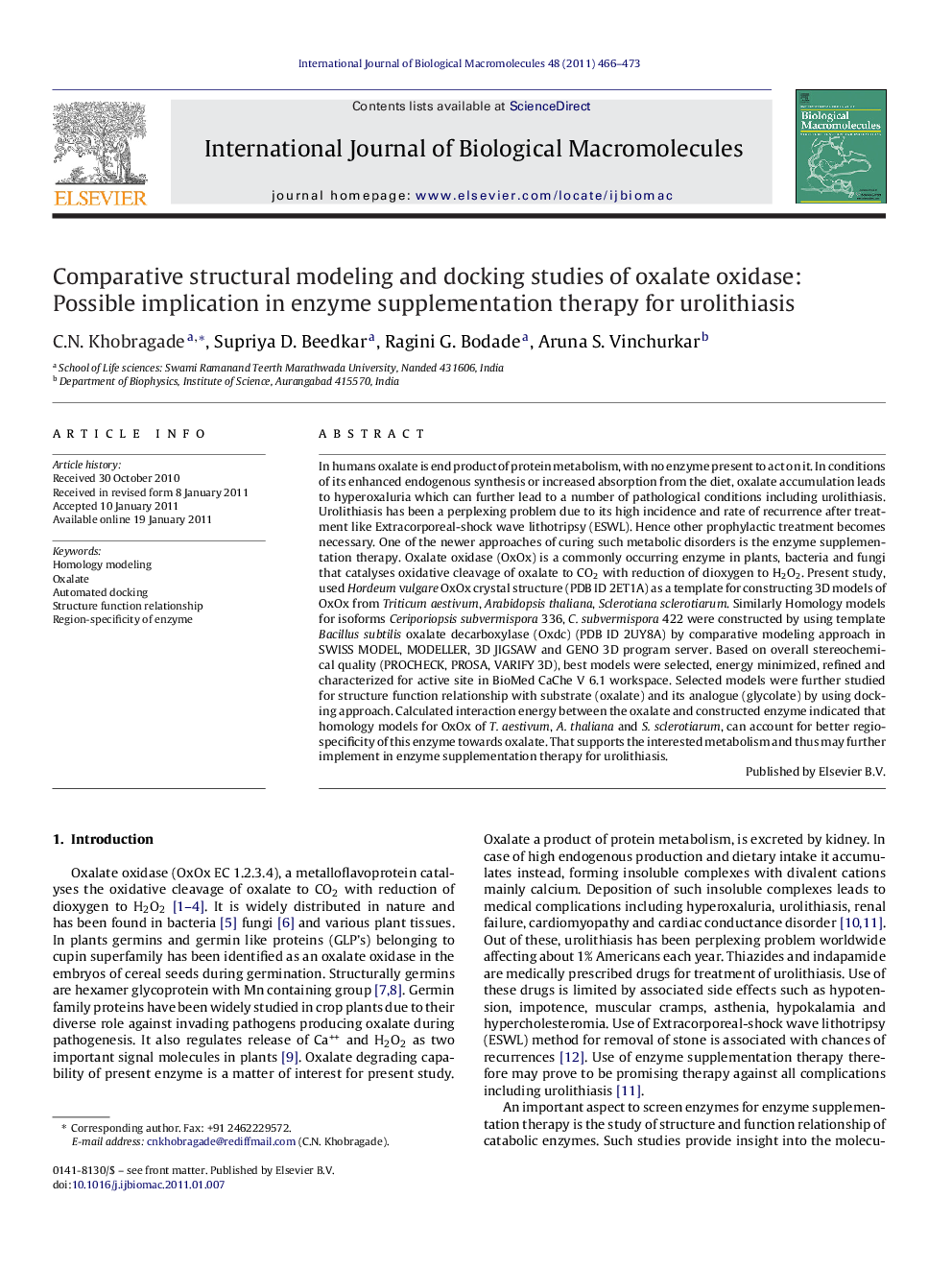| Article ID | Journal | Published Year | Pages | File Type |
|---|---|---|---|---|
| 8336020 | International Journal of Biological Macromolecules | 2011 | 8 Pages |
Abstract
In humans oxalate is end product of protein metabolism, with no enzyme present to act on it. In conditions of its enhanced endogenous synthesis or increased absorption from the diet, oxalate accumulation leads to hyperoxaluria which can further lead to a number of pathological conditions including urolithiasis. Urolithiasis has been a perplexing problem due to its high incidence and rate of recurrence after treatment like Extracorporeal-shock wave lithotripsy (ESWL). Hence other prophylactic treatment becomes necessary. One of the newer approaches of curing such metabolic disorders is the enzyme supplementation therapy. Oxalate oxidase (OxOx) is a commonly occurring enzyme in plants, bacteria and fungi that catalyses oxidative cleavage of oxalate to CO2 with reduction of dioxygen to H2O2. Present study, used Hordeum vulgare OxOx crystal structure (PDB ID 2ET1A) as a template for constructing 3D models of OxOx from Triticum aestivum, Arabidopsis thaliana, Sclerotiana sclerotiarum. Similarly Homology models for isoforms Ceriporiopsis subvermispora 336, C. subvermispora 422 were constructed by using template Bacillus subtilis oxalate decarboxylase (Oxdc) (PDB ID 2UY8A) by comparative modeling approach in SWISS MODEL, MODELLER, 3D JIGSAW and GENO 3D program server. Based on overall stereochemical quality (PROCHECK, PROSA, VARIFY 3D), best models were selected, energy minimized, refined and characterized for active site in BioMed CaChe V 6.1 workspace. Selected models were further studied for structure function relationship with substrate (oxalate) and its analogue (glycolate) by using docking approach. Calculated interaction energy between the oxalate and constructed enzyme indicated that homology models for OxOx of T. aestivum, A. thaliana and S. sclerotiarum, can account for better regio-specificity of this enzyme towards oxalate. That supports the interested metabolism and thus may further implement in enzyme supplementation therapy for urolithiasis.
Related Topics
Life Sciences
Biochemistry, Genetics and Molecular Biology
Biochemistry
Authors
C.N. Khobragade, Supriya D. Beedkar, Ragini G. Bodade, Aruna S. Vinchurkar,
